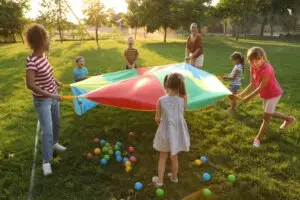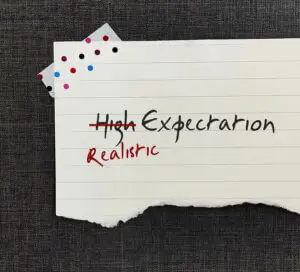Ways to Create a Physically and Emotionally Safe Learning Environment for Children at Church
March 22, 2024

This blog is part of a series on Fostering Healthy Minds in Children at Church that provides strategies children’s leaders can use to foster healthy minds in children to whom they minister. And, hey, you may even pick up a tip or two to help those in your personal circles! If you’re new to the series, we encourage you to check out the introduction here.
When children don’t feel safe in an educational setting, their emotional and mental energy is spent on trying to stay safe instead of on learning.
You can help set up the children in your group for successful learning by creating a space that is safe both physically and emotionally.
Here are ways you can make sure the environment you provide is conducive to positive missions discipleship.
Addressing Physical Safety
Physical safety is a necessity in ministry and in life, especially for children. (Sorry y’all, no rooftop parties! I hate to be a thief of joy.) In all seriousness, make sure the space where your group meets has enough room for children and leaders to have personal space. Many people crammed into a tiny space gets loud, overwhelming, and can lead to smacked faces and pushes.
Another aspect of physical safety is to ensure you have at least two adults per classroom for safety and security reasons. Additional leaders are advised when a specific situation would benefit from a smaller leader/child ratio. A church may have safety/security guidelines with a lower ratio of child per adult, and should follow those guidelines.
Be sure to familiarize yourself with your church’s child protection policy and discipline procedures. Identify safe behaviors between leaders and children within the context of your church, and stay up to date with any changes to the policy or procedures while you lead a group of children at any age.
Addressing Emotional Safety
How do we make a space emotionally healthy and safe? The leader needs to set the tone of the group. It is always better to start off with healthy limits and boundaries than to try to enforce them later if you started off like the Wild West.
Allow your group to come up with rules together so they have ownership in what the atmosphere will be like. Some ideas include no hitting, no name calling, no ignoring, and no dismissing other people. I am sure you have a few you can add to that list!
When I work with kids, one thing I hear often is they don’t feel comfortable telling their teachers something is wrong. Again, a leader can set the tone by making it known they are open to talk about anything that seems amiss in the group. Make sure kids know you are there to help everyone feel emotionally and physically safe.
However, if you say it, you have to follow through. Another thing I often hear from kids is that when they finally speak up, nothing is done. The damage a leader can do by dismissing concerns or not following through on protecting a child’s feelings or safety is hard to recover from.
If you have a hard time with this (because, let’s face it, sometimes kids get upset over “small things”), start by validating the child’s feelings. If you aren’t sure how to help, ask them! Ask what they want to see happen in order to feel safe. If it’s not reasonable, work together to come up with a solution that is reasonable and still allows the child to feel heard.
Now, leader, you are definitely not off the hook! You also play a role in emotional safety. You are modeling what behavior is considered acceptable within the group. All adults in the room need to make sure their responses promote emotional safety. This means watching your tone, not being dismissive or invalidating, and not using sarcasm or teasing.
Remember: You set the tone for the group. This can be a tall task sometimes because, hey we’re human, but I believe in you! I’ve said it before and I will say it again, your group may be the only place where children experience this kind of safe, healthy environment. Don’t waste the opportunity.
Brooklyn Hancock is Licensed Mental Health Counselor, Registered Play Therapist, mom, and former Certified School Counselor. Her passions are working with children, adolescents, teens, adults, and parents to navigate life’s toughest challenges.
Disclaimer: The information shared on wmu.com is not meant to diagnose or treat a mental health condition. We encourage you to follow up with your health-care provider and seek a mental health professional for individual consultation and care.













